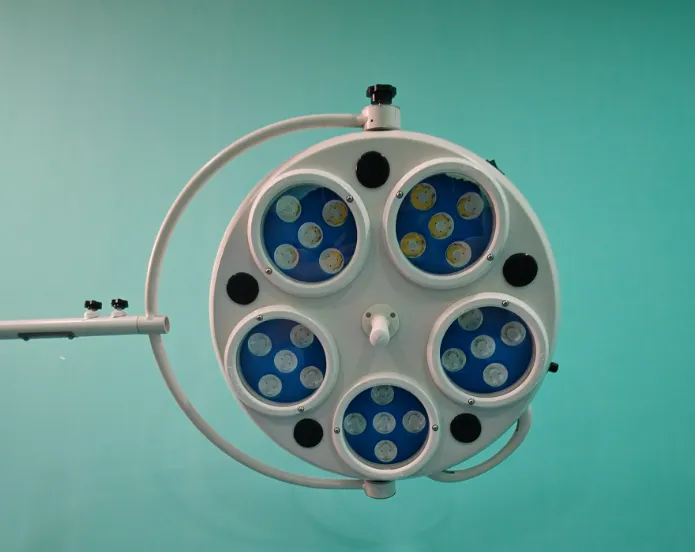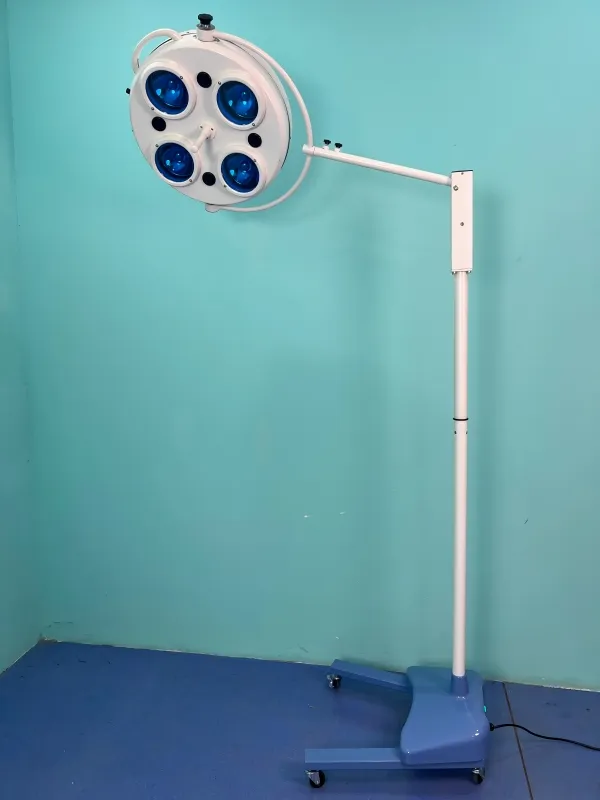What Are The Different Types Of Surgical Lights?
Every hospital needs to be equipped with operating room, and choosing the right surgical light is extremely important for the success of an operation. So we must know: What are the different types of surgical lights?

LED Surgical Lights
I find that LED surgical lights are a top pick for today’s operating rooms. Their new technology offers many advantages over older lighting.
Key Features and Performance
High Luminous Efficacy: LED surgical lights can produce 100 lumens per watt or more. Some high-flux models are even more efficient. I’ve seen most models achieve up to 160,000 lux at the center. This brightness ensures surgeons have a clear view for difficult operations.
Lifespan and Durability: LEDs are built to last. I’ve noticed they can work for up to 60,000 hours if you use them as recommended. Manufacturers usually state these lights will perform well for 25,000 to 40,000 hours. Halogen bulbs can stop working without warning. LEDs, on the other hand, slowly get dimmer. This makes them more reliable when things are critical.
Energy Efficiency: LED surgical lights use much less energy. I’ve found they can cut power needs by 50% or more compared to old lights. This lower energy use saves money on running costs. It also helps healthcare facilities meet their green goals.
Heat Management: LEDs surgical lights give off very little heat. This prevents problems like tissue drying out or too much infrared light. I know that current rules say surgical lights must keep the lit area’s heat under 1,000 W/m². LEDs meet this standard without trouble.
Adjustable Illumination Quality: Surgeons can adjust LED light brightness, color, and focus for what they need. I recommend starting at 50% brightness for the best clarity. This way, the image won’t be distorted. The usual view area is between 0.17 and 0.30 meters. This offers good precision for various surgeries.

Enhanced Usability and Additional Benefits
Size and Reliability: LED chips are small and very strong. I believe they provide reliable performance for a long time.
Shadow Reduction: Many LED surgical lamps are designed to reduce shadows. These shadows can happen when medical staff move around. This design helps keep the view clear.
Integrated Technology: Some modern LED lighting systems have useful features. For example, you can adjust colors. They might also include built-in cameras with 4K or HD quality. I find these features improve how procedures are recorded and seen.
Comfort for Medical Teams: LEDs provide cooler and steady light. Based on my experience, this makes long surgeries more comfortable for surgeons and their teams.
Emergency Features
Gradual Intensity Decline and Backup: During an emergency, LED lights don’t just turn off. Instead, they slowly dim. This gives an early signal that something is wrong. I’ve seen backup systems turn on within a few seconds. They ensure at least 40,000 lux of light. This keeps things safe even if the power goes out.If it is used for wholesale, it is necessary to find a reliable surgical lights manufacturer.
Halogen Surgical Lights
I find halogen surgical lights are still a good, practical option for many operating rooms. They work well and don’t cost too much. These lights use halogen bulbs. They give off bright, focused light, which I think is great for many kinds of surgery.
Key Specifications and Performance
Lamp Power and Light Output:
I’ve seen halogen surgical lights operate at 50 W, 105 W, or up to 150 W. The light they produce can vary. For example, dome lights give about 4,000 foot candles at 36 inches (914 mm). Other models can offer from 90,000 lux to 150,000 lux from 1 meter away. It really depends on the specific model and how you set it up.
Color Temperature and Color Rendering:
Most models I’ve encountered give off a warm white light. I observe their color temperature is between 3,700 Kelvin and 5,000 Kelvin. A high CRI, I’ve noted it’s around 96, helps doctors see tissue clearly during delicate operations.
Bulb Life and Replacement:
Halogen bulbs last for about 1,400 hours. It’s easy to change them. But, because they don’t last as long as LEDs, you’ll find yourself replacing bulbs more frequently. I think this is an important point to consider when choosing.
Design Flexibility and Mounting Options
Mounting Choices:
I suggest hospitals consider their needs carefully. They can pick single or double ceiling mounts. Wall mounts and mobile floor stands are also options. This choice offers good flexibility for different operating room setups.
Use Cases and Value
Applications:
I see halogen surgical lights used quite a bit. They appear in general surgeries. They are also used in more specialized ones like thoracic and cranial operations. These types of surgeries need strong, steady light.
Advantages:
I think these lights have clear benefits. They are simple to use. They don’t cost a lot. And they are very reliable. One thing to keep in mind, though, is that they produce more heat than LED lights. Also, as I mentioned, you’ll need to replace the bulbs more often. I recommend weighing these points.
High-Intensity Discharge (HID) Surgical Lights: My View
From my perspective, High-Intensity Discharge (HID) surgical lights are a strong choice for lighting in operating rooms. These lights last a good while, between 10,000 and 24,000 hours. I think this means they are quite durable if you use them a lot in surgery.
How HID Surgical Lights Perform: My Observations
Light Output: In my experience, HID surgical lights get very bright. They meet the key lighting standards for medical use. They can provide 40,000 to 160,000 lux right where the surgery happens. This level of brightness meets the tough requirements I’ve seen for operating room lights.
Color Quality: HID lights give off a white light. I believe this is very important for seeing small details in tissue. The light they produce is steady. Their ability to show colors correctly stays within medical limits. I think this helps doctors see things accurately during surgery.
Comparing with Other Lights: HID lights offer a middle ground, in my opinion. They are more efficient and last longer than old incandescent or halogen bulbs. However, they often don’t match the energy savings or brightness efficiency of modern LED surgical lights. For instance, LEDs can produce over 100 lumens per watt. I’ve seen that LEDs can also offer better controls and be kinder to the environment.
Heat from HID Lights: What I Think You Should Know: One thing I always tell people to think about with HID lights is the heat they create. HID lights can get quite hot. This needs careful watch during long surgeries. However, I find it can often be handled with new fixture designs.
HID Surgical Lights: Where I See Them Used
Lasting Power and Uses: With a typical working life of 10,000–24,000 hours, I suggest HID lights for places that want a good mix of cost, how well they work, and how often they need fixing.
Meeting Operating Room Rules: Many operating rooms choose these lights if they need very bright light and dependable white light quality. In my view, this makes them good for many types of surgery.
My Thoughts on Their Value
HID surgical lights may not always save as much energy or be as high-tech as LED lights. Still, I see many hospitals prefer them. This is because they offer dependable light, a good long life, and meet tough surgical lighting rules.
If you compare them to some LED models, like the Luxor 300 Series (which gives up to 130,000 lux and has adjustable light areas and color warmth), HID lights might not have all the newest features. But, from my experience, they are still a key option for many surgery settings.
My Practical Thoughts
So, to sum up, I’d say incandescent surgical lights give you basic light for a low starting price. But, from my perspective, they have clear problems. These include making a lot of heat and having bulbs that don’t last long. They are also not very efficient and aren’t as bright as newer halogen and LED surgical lights. I’ve seen that these issues have made most hospitals and clinics switch. They choose newer, safer lights that use less energy. I recommend this switch too.
